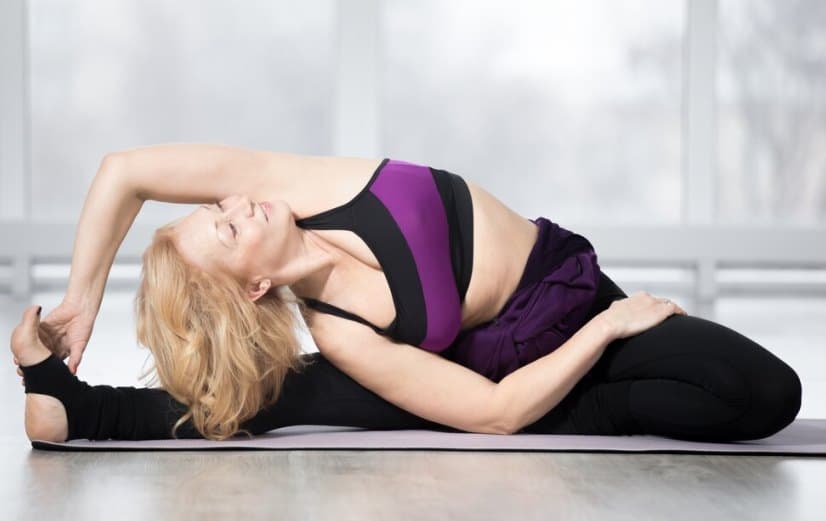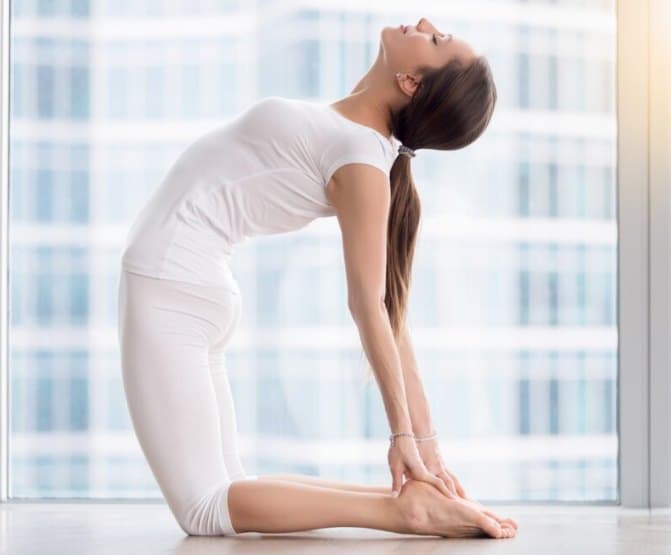Pregnancy is a transformative and delicate time in a woman’s life. While yoga can be a great way to stay active, reduce stress, and prepare for childbirth but certain poses can be harmful to both the mother and the baby.
Knowing which poses to avoid during pregnancy ensures a safe practice that supports the well-being of both. Below is a detailed guide highlighting 8-10 yoga poses to avoid during pregnancy, with explanations to help you navigate your yoga journey safely.
Yoga Poses to Avoid While Pregnant
Ten yoga positions that should be avoided during pregnancy are listed below, along with reasons for each and safer alternatives.
1. Deep Twists
In deep twists, the torso rotates significantly around the spine. For example:
- Marichyasana (Seated Twist): Involves sitting with one leg bent and twisting the upper body toward the bent knee.
- Revolved Triangle Pose: A standing posture where you twist deeply while extending your arms and legs.
Risks:
Deep twists compress the abdomen, which can reduce blood flow to the uterus and potentially strain the developing baby. They also exert pressure on internal organs.
Safer Alternative:
Opt for gentle open twists where the twist is focused on the upper back, keeping the abdomen open and free.
2. Full Inversions
- Headstand (Sirsasana): Involves balancing the entire body on the head and forearms.
- Handstand (Adho Mukha Vrksasana): Involves lifting the entire body off the ground, balancing on the hands.
Full inversions can disrupt blood flow and pose a risk of falls, especially as balance becomes challenging during pregnancy. These poses can also increase pressure on the uterus.
Safer Alternative:
Gentle inversions like legs-up-the-wall (Viparita Karani) are safer options to relieve swelling and improve circulation.
3. Deep Backbends
- Wheel Pose (Urdhva Dhanurasana): A full backbend where you lift your body into an arch, supported by your hands and feet.
- Full Camel Pose (Ustrasana): Involves leaning backward, reaching your hands to your heels, and pushing the hips forward.
These poses overstretch the abdominal muscles, which are already strained due to the growing belly. Deep backbends can cause diastasis recti (separation of abdominal muscles).
Safer Alternative:
- Modified Camel Pose: Perform a slight backbend by placing your hands on your lower back for support and keeping the movement gentle.
- Cat-Cow Pose: Provides a gentle backstretch and strengthens the spine without overextension.
Check Also: Why Office Workers Should Embrace Chair Yoga?
4. Poses That Require Lying on the Stomach
- Cobra Pose (Bhujangasana): Lying on the stomach, you lift the upper body by pressing into the palms.
- Locust Pose (Salabhasana): Involves lifting both the upper body and legs off the ground while lying on the stomach.
These poses compress the uterus and place unnecessary pressure on the baby. As the pregnancy progresses, lying on the stomach becomes uncomfortable and unsafe.
Alternative:
- Supported Sphinx Pose: Use a bolster under the chest to practice a gentle heart-opening posture without lying flat on the stomach.
5. Intense Core Work
- Boat Pose (Navasana): Involves balancing on the sit bones with legs lifted and the torso reclined, heavily engaging the core.
- Plank Variations: Include holding the body in a straight line while resting on hands or forearms.
Risk:
Intense core work increases abdominal pressure, which can lead to muscle separation (diastasis recti) and unnecessary strain.
Safer Alternative:
- Modified Planks: Perform planks on your knees instead of toes to reduce pressure.
- Side-Lying Leg Lifts: Strengthen the core gently while lying on your side.
6. Deep Forward Folds
- Standing Forward Bend (Uttanasana): Involves bending forward at the hips with the legs straight, aiming to bring the head toward the knees.
Risks:
This pose compresses the abdomen, potentially restricting blood flow to the baby. It can also cause dizziness due to sudden shifts in blood pressure.
Safer Alternative:
- Wide-Legged Forward Fold (Prasarita Padottanasana): Keep your legs apart to create space for the belly, and focus on lengthening the spine rather than deep folding.
7. Balancing Poses Without Support
- Tree Pose (Vrikshasana): Involves standing on one leg while placing the sole of the other foot on the inner thigh or calf.
Risks:
Pregnancy alters the body’s center of gravity, making balance more challenging. Practicing without support increases the risk of falling.
Safer Alternative:
- Tree Pose with Wall Support: Stand near a wall or use a chair for stability. Focus on grounding through the standing leg without compromising balance.
8. Poses with Intense Stretching
- Splits (Hanumanasana): Involves sliding one leg forward and the other backward to create a full split.
- King Pigeon Pose: Involves deep hip stretching while arching the back and reaching for the foot.
Risks:
The hormone relaxin, which loosens ligaments during pregnancy, increases the risk of overstretching and joint injuries in these poses.
Safer Alternative:
- Modified Pigeon Pose: Perform a gentle hip opener by placing your bent leg at a comfortable angle and supporting yourself with props.
9. Prone Poses or Lying Flat on the Back
- Corpse Pose (Savasana): Traditionally involves lying flat on the back with arms and legs relaxed.
Risks:
Lying flat on the back for extended periods, especially in the second and third trimesters, can compress the vena cava (a major vein) and reduce blood flow to the baby.
Alternative:
- Side-Lying Relaxation Pose: Lie on your left side with a bolster or pillow supporting your head and hips for optimal comfort.
10. Intense Heat-Generating Practices
- Hot Yoga: Performed in a heated room (90–105°F or higher) to intensify poses and promote sweating.
Risks:
Excessive heat can lead to dehydration and overheating, which may harm both the mother and the baby.
Safer Alternative:
- Gentle Prenatal Yoga: Practice in a temperature-controlled environment and focus on movements that promote relaxation and connection.
Conclusion
Yoga during pregnancy is a wonderful way to stay connected to your body and prepare for childbirth, but it’s crucial to practice mindfully.
Avoiding poses that strain, compress, or endanger your body or baby is key to a safe and enriching experience. By prioritizing gentle, supportive movements, you can enjoy the benefits of yoga while nurturing yourself and your growing baby.

